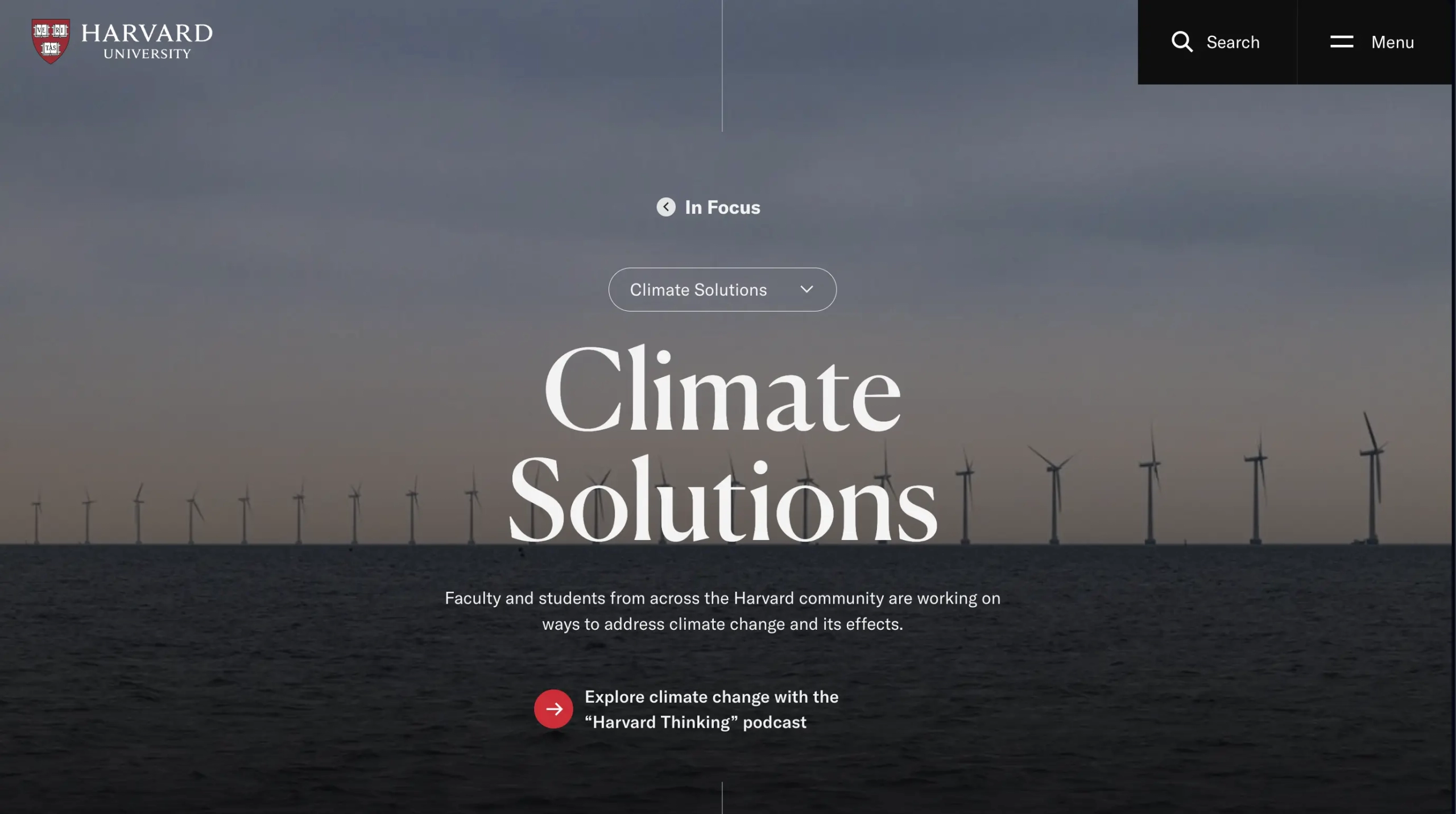
Top University Marketing Trends to Watch in 2025: Engaging Gen Z Students
Discover university marketing trends that uses higher education web design, social media strategies, and student engagement tools to attract Gen Z students in 2025.
Navigating the landscape of higher education marketing is no easy feat. As a university, you’re not just competing with other institutions—you’re vying for the hearts and minds of prospective students and their families, who rightfully see education as a significant investment.
Understanding this, your challenge is to communicate the value of your offerings convincingly and persuasively, not just rationally. From our experience working closely with universities such as UCSF and Columbia University, we’ve seen firsthand how essential it is to innovate constantly and differentiate your institution in a crowded market.
Universities aren’t just offering a product or service—they’re presenting a life path. This makes brand storytelling crucial, as it needs to resonate deeply with prospective students. The real challenge lies in achieving that connection authentically.

This is a curious choice for any university looking to leverage their website for recruitment, and you wouldn’t be wrong to think that Harvard, with their internationally famous brand, can afford to use that all-important first page for such an aspirational message that seemingly doesn’t have much to do with attracting students.
But there is a lesson here for any university brand, even those that aren’t as well known: universities must, first and foremost, understand the importance of aligning their brand narrative with their student’s deepest motivations.
Gen Z, as we know, is deeply concerned with climate change. By focusing on topics like climate solutions above all else, Harvard built a brand narrative that demonstrates a lived philosophy which is sure to resonate deeply with prospective students. This strategic approach, even implemented in a subtler way, will help universities connect with their audience on a more meaningful level and differentiate themselves in a crowded higher education landscape.
1. Elevate User Experience and Engagement
User experience (UX) is paramount in capturing the attention of potential applicants and keeping them engaged. Intuitive navigation, mobile responsiveness, and interactive multimedia content are essential elements for creating a seamless and immersive browsing experience that gives students a real sense of your university’s ethos. By prioritizing user-centric design principles, universities can foster deeper connections with students and encourage further exploration of their offerings.
While a lot of other industries are riddled with old website builds that only find cosmetic changes every once in a while, this isn’t the case in the educational sector. Recent data collected through our own research this year reveals that a significant majority of schools have recognized the significance of staying current with web design trends; 85% of the university websites we surveyed had been updated or redesigned within the previous five years.
Interestingly, we found that 50% of websites had been redesigned within 3-5 years, as reported by 50% of respondents, followed closely by 35% who boast designs that are just 0-2 years old.
This emphasis on recent redesigns underscores universities’ commitment to providing an intuitive and visually appealing user experience, ensuring that visitors are met with a modern and engaging platform that reflects the institution’s forward-thinking approach to education–and also, that competition can’t fall too far behind.
Universities have a significant opportunity to enhance their user experience by prioritizing accessibility, personalization, and engagement across all touchpoints, especially through their website. By investing in intuitive navigation, responsive design, and relevant content, universities can create a seamless and immersive digital experience for prospective students, current enrollees, and alumni alike.
2. Invest in a Seamless Application Process
A seamless application process is not just a convenience; it’s a critical component of successful recruitment. Frustration with the application process can significantly impede prospective students from completing their applications. When faced with confusing forms, unclear instructions, or technical glitches, many applicants may abandon their applications altogether. This frustration not only reflects poorly on the university, but also diminishes the likelihood of attracting top talent.
Even minor points of friction, such as lengthy forms or redundant information requests, can lead to drop off and deter potential candidates from completing their applications.
Cumbersome processes may leave applicants with a negative impression of the university, impacting their perception of the institution’s efficiency and commitment to student success. To address these challenges, universities must prioritize the optimization of their application process. This involves simplifying forms, providing clear and concise instructions, and offering readily accessible support channels for assistance. By minimizing friction points and creating a user-friendly application journey, universities can increase applicant satisfaction, boost completion rates, and ultimately attract a more diverse and qualified pool of candidates.
3. Build Your Reputation with Trust and Credibility
A professional and informative website is a cornerstone of trust-building in university marketing. By providing accurate and up-to-date information about programs, faculty, facilities, and campus life, universities can instill confidence in prospective students and their families. Moreover, maintaining a dynamic digital presence demonstrates a commitment to innovation and adaptability, further enhancing the university’s credibility in the eyes of its audience.
The cornerstone of building trust and credibility as a university lies in defining your core values, mission, and unique selling propositions. By articulating these elements clearly and consistently across all communication channels, particularly through your university website, you can establish a robust brand identity that engenders confidence and distinguishes you in a competitive market.
At Oak Theory, we recognize the importance of crafting your brand’s identity, especially with the purpose of building trust and credibility. Our expertise lies in guiding universities through this process with clarity and assurance, uncovering the authentic essence of your institution and transforming it into a unified narrative that reflects your overarching vision.
By delving into your objectives, principles, and competitive environment, we ensure that your brand identity not only meets your business objectives but also resonates deeply with your target audience. Always adopting a customer-centric approach, we prioritize understanding the needs and expectations of your students and stakeholders, tailoring your brand identity to align seamlessly with their values and aspirations.
4. Make Sure to Measure Success
There is a famous saying that goes, “I know that half of my marketing budget is wasted, but I’m not sure which half”. With measurement tools, it’s now becoming easier to understand where there are gaps and inefficiencies in marketing strategies, allowing for more targeted and cost-effective allocation of resources.
By leveraging analytics tools and tracking key performance indicators, universities can make data-driven decisions to optimize their strategies–and stop spending money on low ROI investments.
To gauge the effectiveness of your university’s website in driving recruitment and brand awareness, you must track key performance indicators (KPIs) and leverage analytics tools. Metrics such as website traffic, bounce rates, conversion rates, and engagement metrics offer valuable insights into user behavior and website performance and will help you understand where improvements need to be made.Universities must grasp the effectiveness of their own various marketing efforts to refine their recruitment strategies; however, what can also be helpful is to see what is working for your competitors.
However, the challenges facing higher education institutions extend beyond the realm of marketing. With shifts in student demographics and ongoing financial pressures, colleges must prioritize innovation in delivery methods while maintaining financial stability. Adaptability and strategic planning are paramount in navigating these turbulent waters and ensuring long-term viability.
Our recent research on the most effective marketing strategies for universities has ranked word of mouth and parent direct referrals as some of the most highly effective enrollment marketing strategies, highlighting the importance of community and relationship-building.
Digital efforts also emerged as pivotal components of how to market a university. Websites, online ads, personalized welcome emails, landing pages, welcome videos, email marketing, and blogs ranked from most effective to least effective, according to our findings.
5. The Shortcut to Success in Website Marketing Strategies for Universities
In an increasingly digital-centric world, your university’s website plays a crucial role in shaping your brand image and attracting prospective students. By implementing these strategies, you can future-proof your university’s online presence and maintain a competitive edge in the ever-evolving landscape of higher education marketing.
At Oak Theory, we understand the importance of strong digital marketing for universities. Our services are tailored to help universities enhance their website marketing strategies, from crafting compelling narratives to optimizing user experiences. With a track record of success working with esteemed institutions like UCSF and Vanderbilt University, we are committed to delivering innovative solutions that drive recruitment and elevate brand visibility.
If you’d like help developing your marketing strategies for university recruitment, please get in touch with us.
Categories
Authors
Search with tags
Follow us online

Discover university marketing trends that uses higher education web design, social media strategies, and student engagement tools to attract Gen Z students in 2025.

Drive brand consistency by transforming fragmented design processes with pattern libraries and clear guidelines that align teams across digital touchpoints.